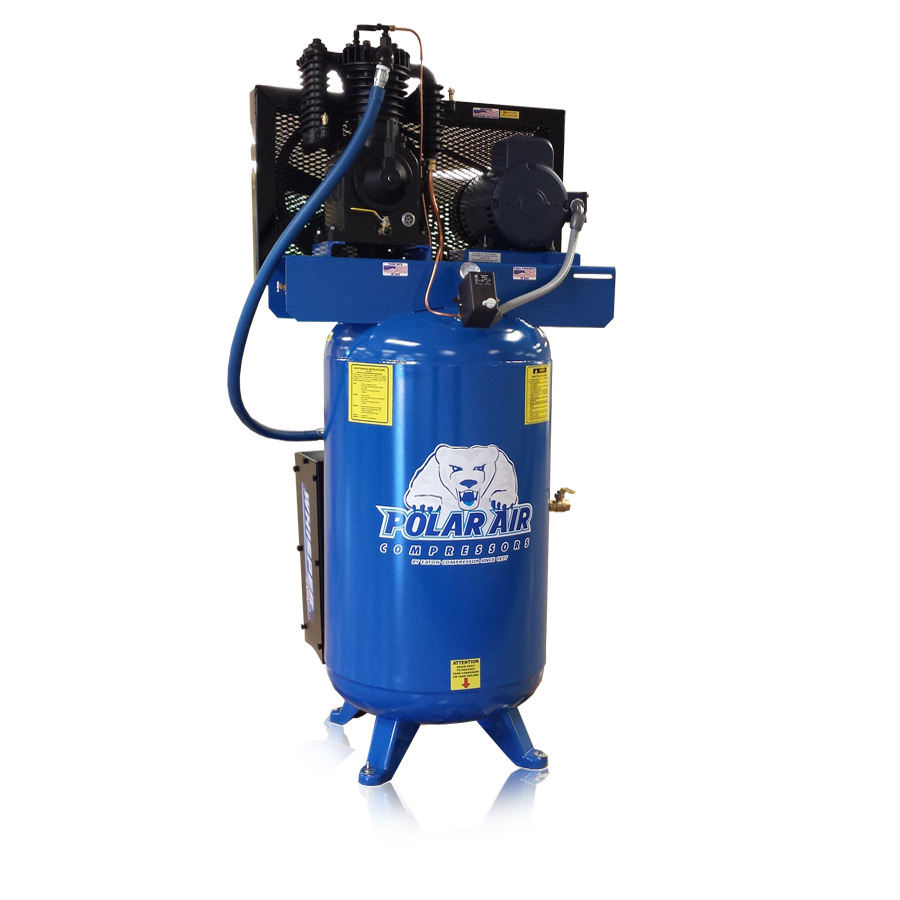Compressed air is a critical component in many industrial operations, ranging from small workshops to large manufacturing facilities. Single phase two stage compressors are a type of compressor used in such operations to provide a reliable source of compressed air. This article will provide an overview of single phase two stage compressors, including their design and operation, as well as their advantages and disadvantages when compared to other types of compressors.
Design and Operation
Single phase two stage compressors are designed to provide a higher pressure and flow rate than single phase compressors, but in a smaller and more affordable package. The two stages of the compressor involve a high-pressure stage and a low-pressure stage, with the high-pressure stage compressing the air to a much higher pressure than the low-pressure stage.
The two stages are connected by an intercooler, which cools the air between stages and helps maintain a more consistent air pressure. The intercooler also helps prevent the compressor from overheating, as the high-pressure stage can generate a significant amount of heat.
The two stages are powered by a single electric motor, typically a capacitor-start motor, which is capable of providing the power needed to run both stages. The motor also serves to provide the start-up torque needed to get both stages running.
Advantages
Single phase two stage compressors offer several advantages over other types of compressors. The most notable of these is their size and cost. Single phase two stage compressors are typically much smaller and more affordable than other types of compressors, making them ideal for smaller operations.
In addition, single phase two stage compressors are much more efficient than single phase compressors, as they are able to compress the air to a much higher pressure. This increased efficiency leads to a decrease in the amount of energy needed to operate the compressor, resulting in lower operational costs.
Finally, single phase two stage compressors are much quieter than other types of compressors. This is due to the two-stage design, which allows the compressor to operate at a slower speed and therefore generate less noise.
Disadvantages
Despite their advantages, single phase two stage compressors also have some disadvantages. The most notable of these is their limited pressure and flow rate. Single phase two stage compressors are limited by the power of the single electric motor, and as a result, they are not able to produce the same pressure and flow rate as a three-phase compressor.
In addition, single phase two stage compressors tend to be more prone to mechanical problems than other types of compressors. This is due to the complexity of their design, as well as the difficulty in maintaining the intercooler. As a result, single phase two stage compressors require more maintenance than other types of compressors.
Finally, single phase two stage compressors are not as efficient as three-phase compressors. This is due to the fact that they are limited by the power of the single electric motor, and as a result, they are unable to make use of the additional power available in a three-phase system.
Conclusion
Single phase two stage compressors are a type of compressor used in many industrial operations. They offer a number of advantages, such as their smaller size, lower cost, and higher efficiency. However, they also have some disadvantages, such as their limited pressure and flow rate, higher maintenance requirements, and lower efficiency compared to three-phase compressors. Ultimately, the choice of compressor type should be based on the specific requirements of the application.

